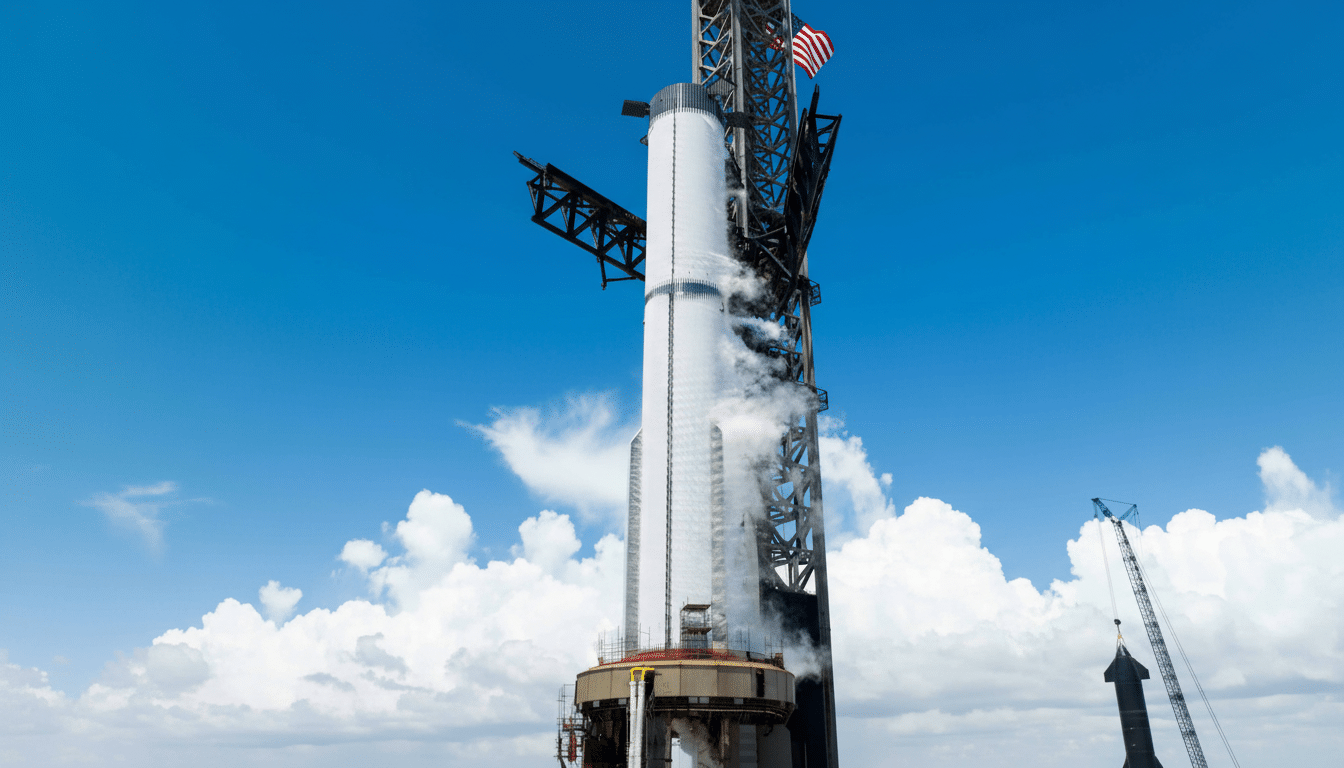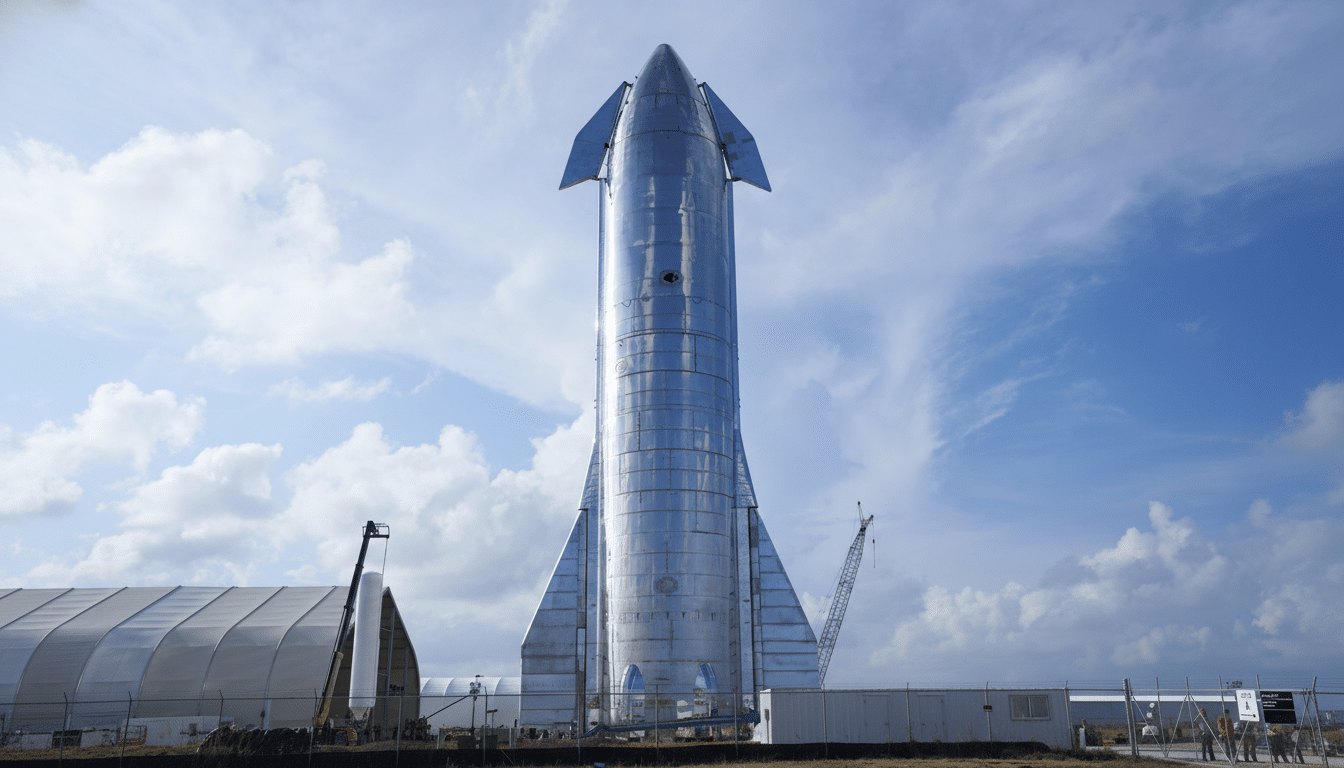SpaceX’s Starship program passed a crucial threshold with its eleventh flight test, making a controlled splashdown in the Indian Ocean on an hourlong mission that marked off several major objectives. The Super Heavy booster also made what is called a planned splashdown, finishing out a demonstration of the vehicle’s long-term reusability as well as its potential future in NASA’s lunar architecture.
Why the eleventh Starship test flight matters now
Reliability is the currency of orbital launch, and back-to-back controlled splashdowns are a significant step for a vehicle built on iterative testing.

Starship, including its 400-foot Super Heavy first stage, is the largest and most powerful rocket ever flown. It must not only demonstrate that it can make it to orbit, but that the ride home is still in some form repeatable, economical, and safe.
The Artemis program at NASA is relying heavily on this progress. SpaceX has a multibillion-dollar contract to develop and supply a Human Landing System version of Starship for Artemis crewed lunar surface missions. Both the U.S. GAO and NASA’s Office of Inspector General have flagged on-orbit refueling and rapid reuse as schedule risks, which in turn makes every successful test flight an important data point toward reducing those risks.
What the latest Starship test flight actually proved
According to the company’s webcast and postflight commentary, the mission checked off a series of milestones:
- Ascent performance
- Separation of the stages
- An extended coast
- Controlled splashdowns for both stages
The second stage ship, known to SpaceX as Ship 38, was put through its paces by flying a “dynamic banking” reentry that is one of the techniques used to expand the landing envelope and ultimately make precision approaches to the launch tower for a mechanical catch.
Engineers also used the flight to stress-test thermal protection. The spacecraft was covered with a patchwork of heat shield tiles, including prototypes located in high-flux regions. The heat shield of Starship has been among the most obstinate of engineering problems, and flying variant tiles on a single vehicle is also a classic SpaceX move to speed learning by collecting high-fidelity data under real-world conditions.
The booster’s terminal sequence included a 13-engine burn, aiming for its splashdown zone. Haul operations are still to come, but the guided return of both stages indicates guidance, navigation, and control is coming along rapidly. SpaceX also repeated for Starlink-class satellites a previously successful in-flight payload operation, using mass simulators — an incremental yet suggestive rehearsal for bulk cargo.

Implications for NASA’s lunar plans and timelines
To place astronauts on the Moon, lunar Starship would have to be refueled in space, a goal that calls for multiple tanker flights and a beefy cryogenic propellant transfer—something untested at operational scale.
NASA program documents make it clear that propellant management, docking choreography, and depot operations are all on the critical path. Every successful Starship flight that masters ascent, controlled reentry, and high-energy splashdown boosts confidence the system can get to orbit reliably enough to maintain such a cadence.
Strategically, the timing matters. China’s space agency has sketched out a vision of an international lunar research station in the early 2030s, while both the National Space Council and NASA leadership have placed Artemis milestones within the context of a larger competition to set up shop. A Starship capable of flying, returning, and flying again without significant time-consuming refurbishment cycles would be able to compress mission schedules and reduce costs in a manner no legacy launcher can.
What’s next for Starship after its eleventh splashdown
SpaceX is already iterating on hardware, engines, and operations. Subsequent vehicles — frequently described internally as version upgrades — try to slim down, toughen thermal protection, and streamline plumbing. Raptor engines are still being adjusted and tightened up performance-wise and reliability-wise, which is critical for Super Heavy high-count cluster operations and numerous relights required by more complex mission profiles.
Anticipate upcoming flights to press into the program’s most challenging issues: on-orbit propellant transfer tests, expanded payload operations, and ever-tighter landing dispersions that pave the way for tower capture attempts at Starbase. Regulatory acceptance with the Federal Aviation Administration will be another gating factor, as will environmental and range risk factors, but a cleaner flight history usually leads to shorter licensing cycles.
The broader context is encouraging. SpaceX first championed the cause of routine reusability with hundreds of Falcon booster landings, and the day-to-day practices fine-tuned there — fast turnaround, telemetry-driven maintenance, vertically integrated manufacturing — are being brought to bear at Super Heavy scale. If Starship can turn that into a repeatable orbital and return cadence, the economics of deep-space transport look radically different.
At least for now, the 11th test widens the argument that Starship is outgrowing its childhood of experimentation. More such milestones need to be met before astronauts can board a lunar variant, but the smooth splashdown for both stages is the type of momentum NASA, inspectors, and commercial customers have been eager to see.

